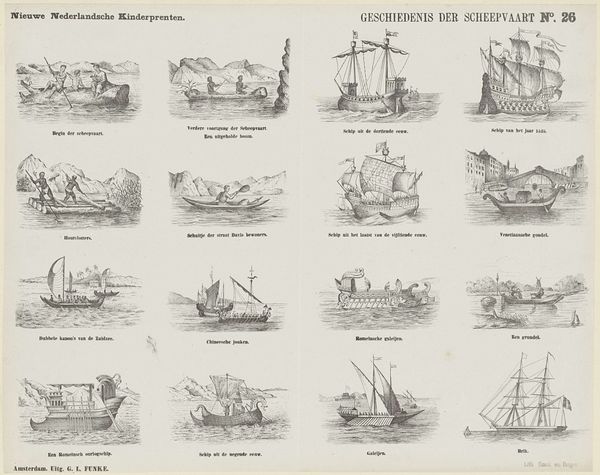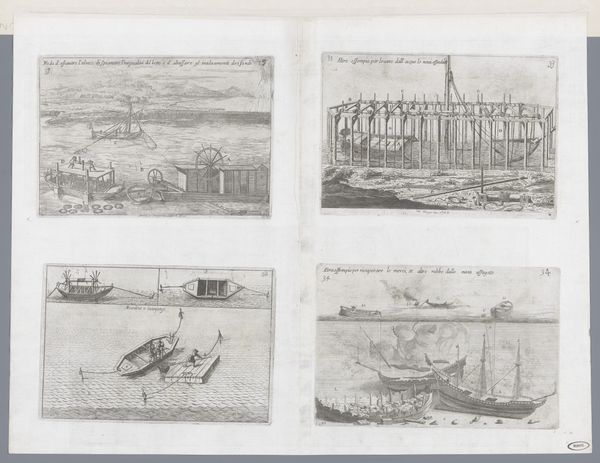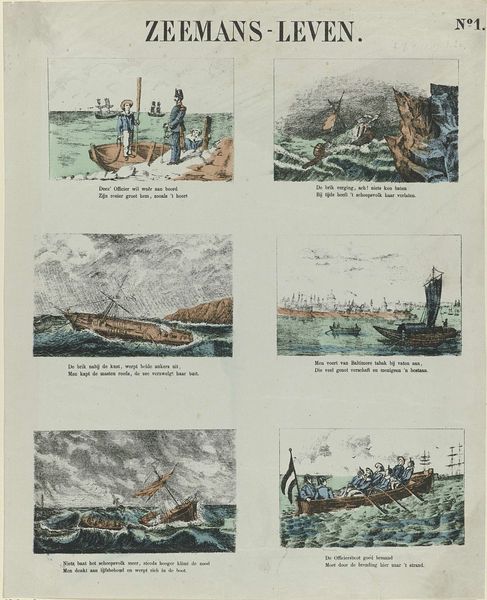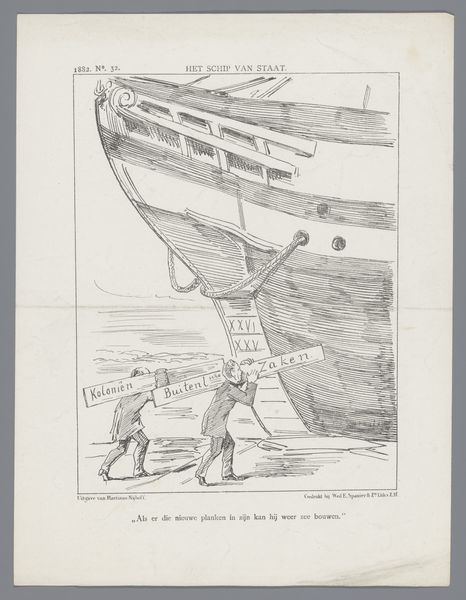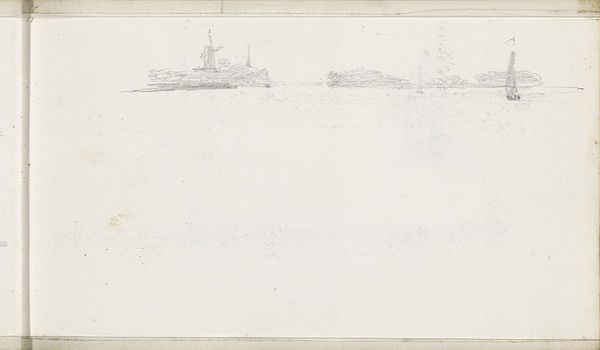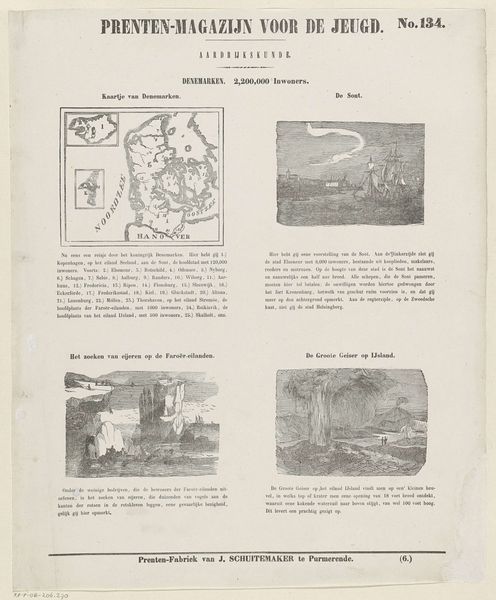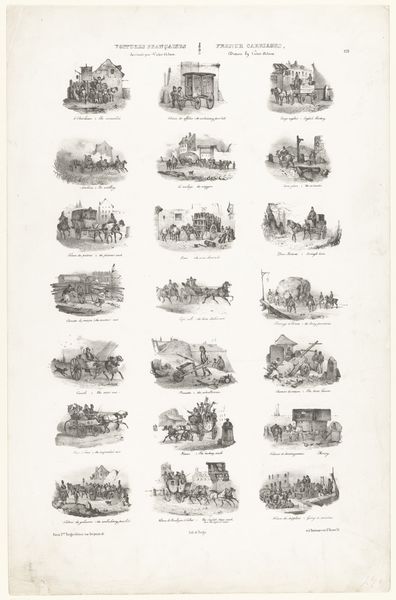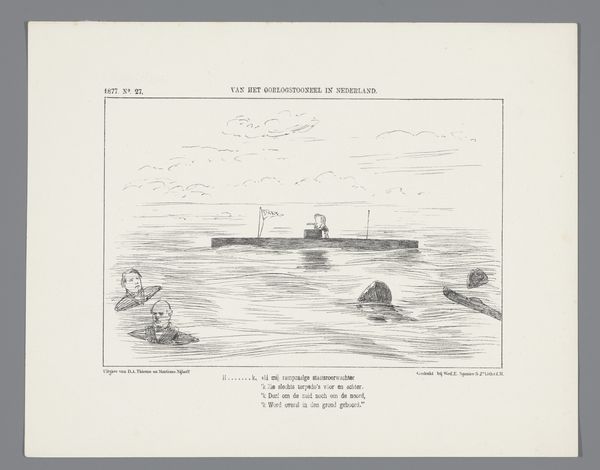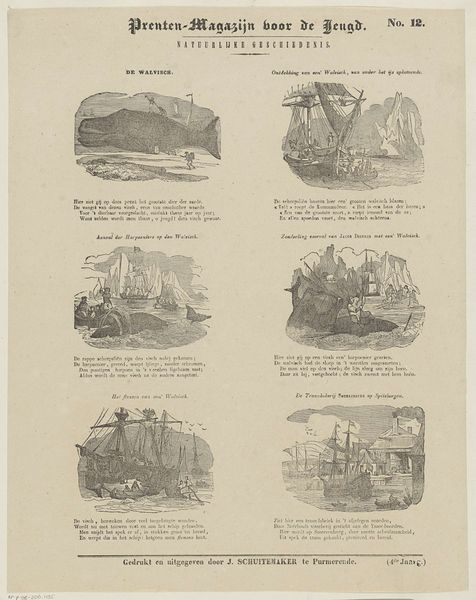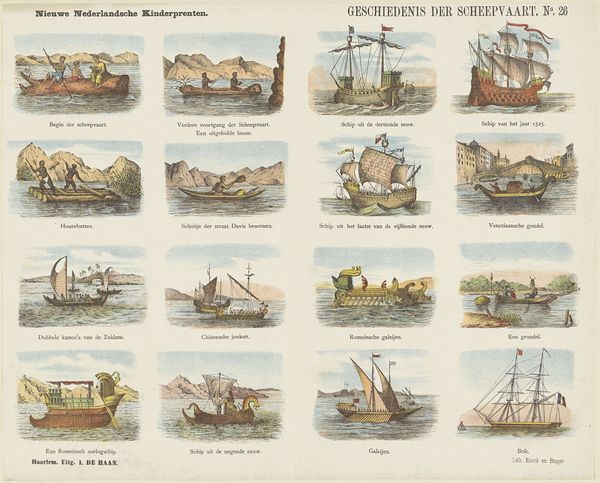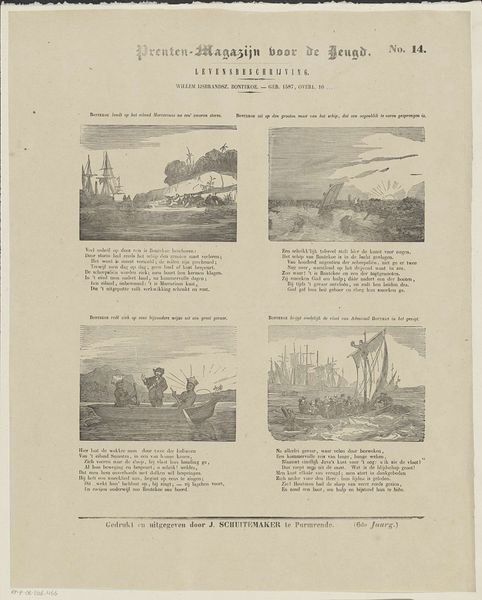
drawing, print, paper, ink
#
drawing
# print
#
asian-art
#
landscape
#
paper
#
ink
#
history-painting
Dimensions: height 290 mm, width 190 mm
Copyright: Rijks Museum: Open Domain
Editor: We're looking at "Nederlandse oorlogsschepen vergaan tussen 1941-1942," a drawing and print made with ink on paper by J. Verhoeven, probably sometime between 1945 and 1960. It's currently housed in the Rijksmuseum. I'm struck by the almost clinical way these ships are depicted, lined up like specimens in a maritime catalog, while the title hints at their tragic fate. What do you make of this juxtaposition? Curator: Ah, yes, a rather somber portrait of loss dressed in the guise of a naval record. The stark presentation certainly mutes the emotional impact, doesn't it? It makes you wonder if it was intended as a factual document, or perhaps as a way of processing a painful national memory with a sense of duty? Editor: I can see that. The almost detached style does feel like it’s holding something back. I wonder what a contemporary audience felt looking at this. Curator: Indeed. Think about it: post-war, the Dutch grappling with the collapse of their colonial empire, the trauma of occupation. The "Verdediging van Indië," "Defence of the Indies," as it proclaims… it rings with a certain… defiance, wouldn't you agree? Despite defeat, the image conveys resolve. “Though dying, we shall bear their scars, never abandoning the flag.” Is that the artist or the culture, I ask you? Editor: It’s a powerful statement. I guess it can be difficult separating an artist’s personal view with the society where that artist existed, and to which they undoubtedly responded to. Curator: Exactly. Perhaps Verhoeven’s piece encapsulates a nation trying to find its footing, grappling with a complex history painted in shades of loss, duty, and maybe a touch of stubborn pride. Editor: I hadn't thought about it that way. I was so focused on the sadness. Seeing it as an act of defiance shifts the whole tone. Thanks!
Comments
No comments
Be the first to comment and join the conversation on the ultimate creative platform.

